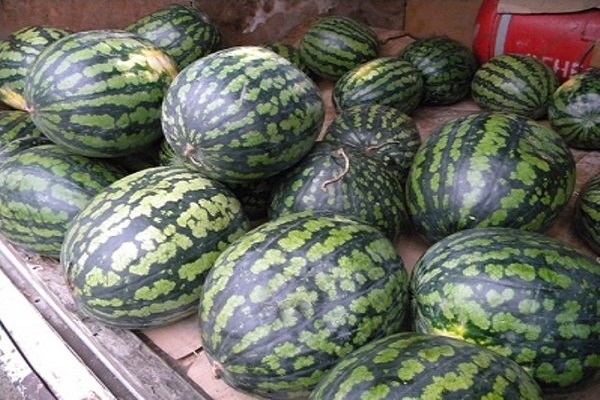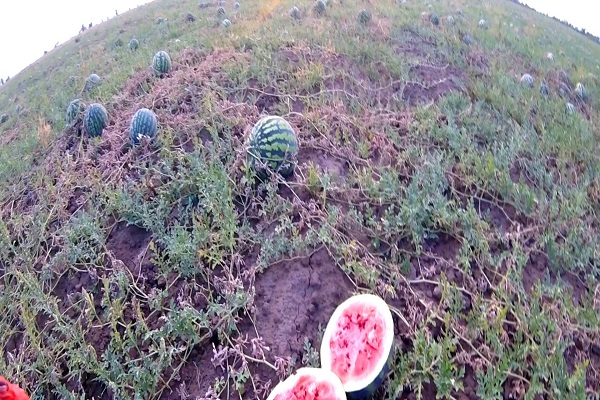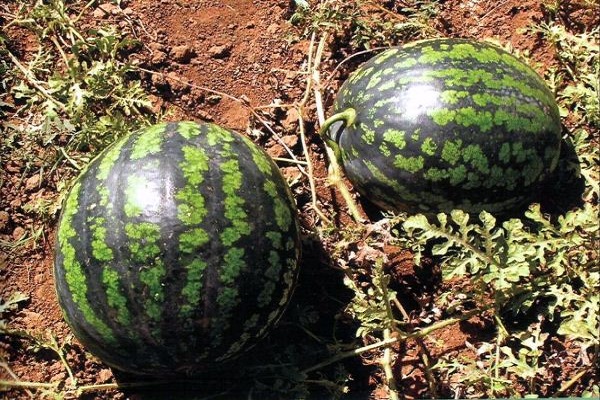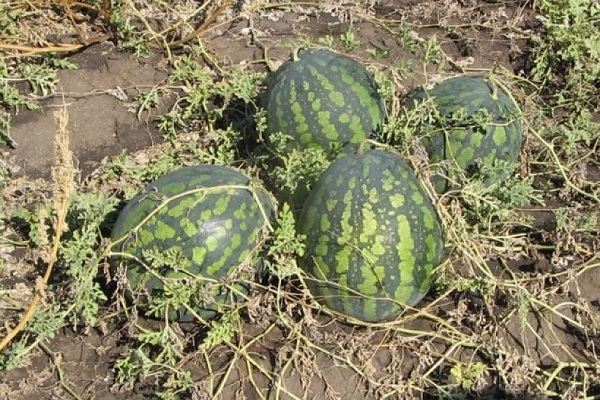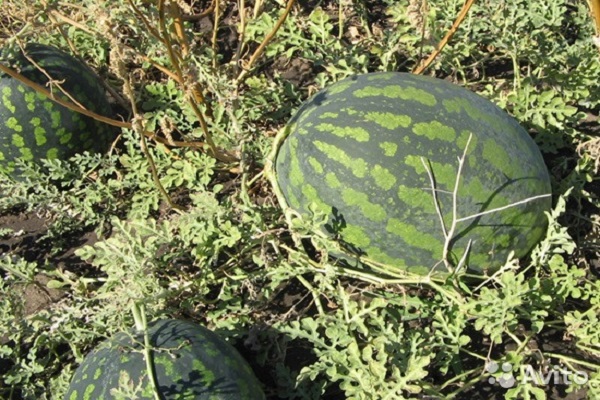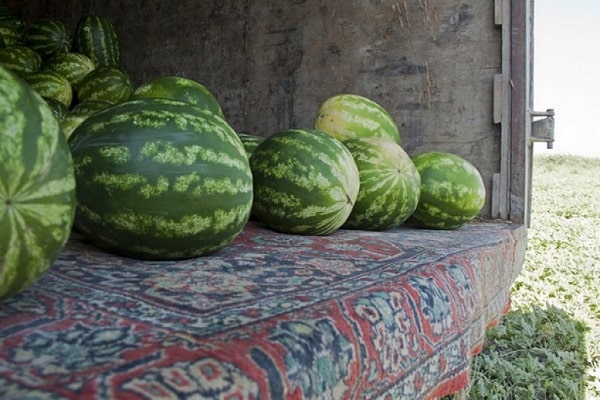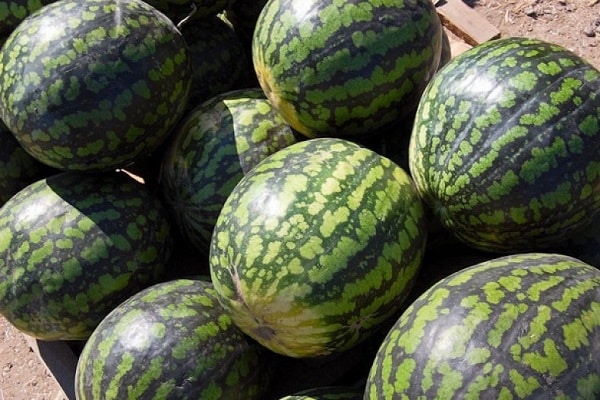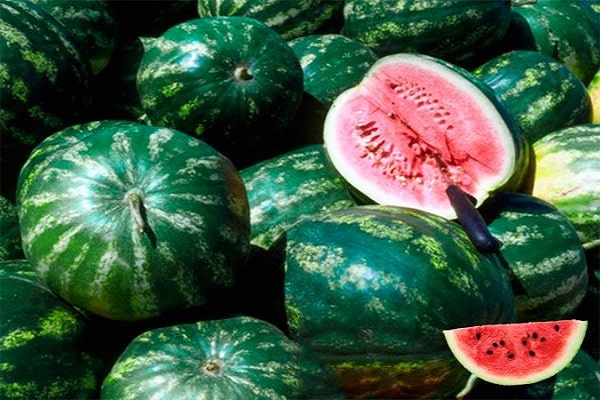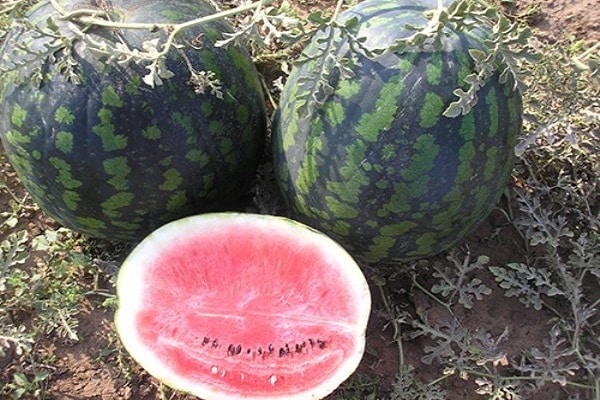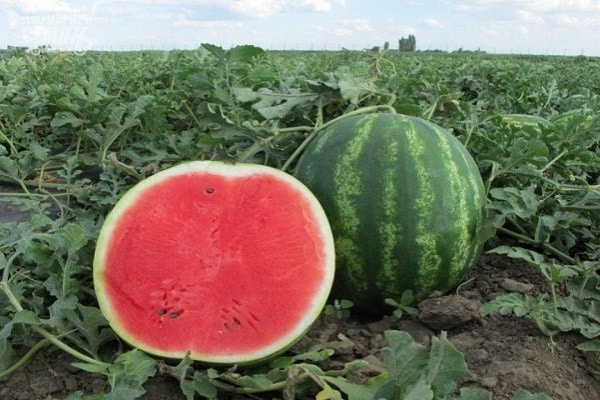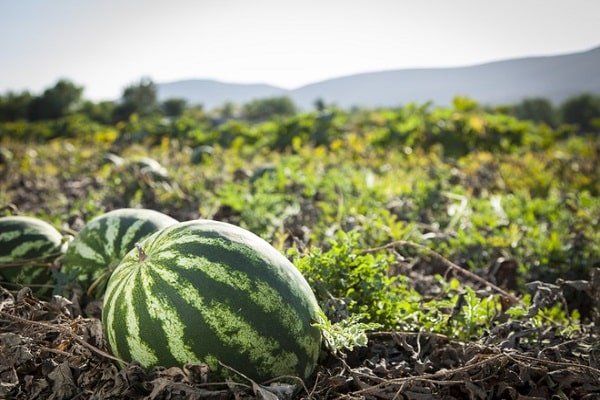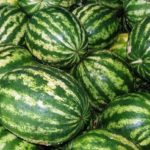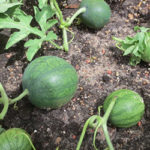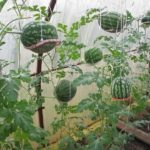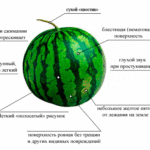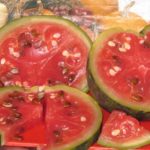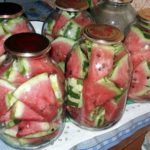Watermelon is a well-known large fruit with juicy, aromatic pulp and a sweet taste. People look forward to the watermelon season to enjoy the delicious berry to their hearts. Growing watermelons is becoming a popular activity; thanks to warming and the work of breeders, they grow well in regions where previously they only reached through the efforts of carriers. For example, watermelons of the Kholodok variety tolerate low temperatures well, which is why they received their characteristic name.
Characteristics and description of the variety
Chill is a mid-late variety. Harvesting begins 90 days after planting the seeds. The plant feels good in the open ground of the southern regions and is suitable for greenhouse cultivation. It is characterized by high yield - from 30 tons per hectare, excellent for planting in the garden and for growing melons.
The variety has bright green leaves, slightly elongated berries weighing 4-5 kilograms, and long branched shoots. Bright, with dark stripes, the peel is of moderate thickness, the flesh is juicy, granular, red with a pinkish tint and a rich sweet taste.
Watermelon is suitable for cultivation in the southern Russian regions and throughout the Central Zone. It is grown in the Volga region, in the Southern Urals, in the Volgograd and Astrakhan regions. The harvest is harvested at the end of August. The variety has a long (3-5 months) shelf life of the fruit.
History of selection and region of growth
The history of watermelon cultivation goes back several thousand years. They were brought to Russia from India back in the 8th century. Over the course of several hundred years, thanks to selection, the small, slightly bitter fruit became familiar, large and sweet berries.
Chill is a product of selection by Russian scientists. The variety was bred in the Volgograd region, at the Bykovsky experimental station. This is the result of the work of Sancha Claudia Petrovna, who crossed three varieties of watermelons, and the result was Kholodok, which became very popular due to its taste characteristics, good preservation during transportation, and the long shelf life of ripe fruits.
Unpretentious, able to withstand low temperatures, Kholodok can grow over vast territories - from Astrakhan to the Siberian regions, where it thrives in greenhouses and under film, and produces high yields.
Optimal conditions for good growth
Plenty of sun, moderate watering and light soil - provide this to Chill, and the variety will respond with an excellent harvest.
Watering
Striped berries do not like excessive watering. Water the watermelons as the top layer of soil dries out. Over-watering will spoil the taste of the fruit and significantly reduce the yield. Water Chill once every 7-10 days, depending on weather conditions. During the flowering period, watering is increased and done twice a week.
Feeding and fertilizers
The first root feeding watermelons carried out a couple of weeks after planting the seedlings in the ground. Feed with a solution of mullein or chicken droppings at the rate of 1 part fertilizer to 15 parts water.
When the first ovary appears, feed the plants a second time, using complex fertilizer for melons and melons in strict accordance with the manufacturer’s recommendations.
Ammonium nitrate is often used to feed watermelons; this fertilizer should be used very carefully - excess can significantly worsen the taste of the fruit.
The soil
The soil for melons needs light and fertile. You can pre-sow green manure plants on it before winter. Winter wheat, rye, and peas are suitable. After the emergence of seedlings, the area is dug up.
Important: watermelons are not planted after melons and pumpkins, and they are not sown in the same place for several seasons.
You can add rotted manure to the site in the fall and dig the soil deeply. Melons do not like acidic soils, and watermelons do not grow in waterlogged areas. A sunny place protected from the wind is suitable for planting. Good predecessors for watermelons are tomatoes, legumes, and corn.
How to grow watermelon Chill
In the south, berries are grown in beds or melons using seeds or seedlings; in the north, greenhouses are used or the plants are covered with film.
Seed preparation
Preliminary seed preparation is required. They are placed in warm water; only specimens that have sunk to the bottom are used for planting. Selected seeds are poured with water at 50-55 °C and kept for an hour. The water is drained, and the seeds are placed in an intense pink solution of potassium permanganate for 20-30 minutes. Before planting, the seeds should be treated with a growth stimulator (Epin, Epin-extra).
Then they are planted in pots, covered with film, and placed in a well-lit, warm place. The seedlings are watered and ventilated regularly. A week before planting in open ground, they begin to remove the film every day and take the plantings outside, gradually increasing the time the seedlings are open - this is how they harden.
In greenhouse conditions
In a greenhouse, plants are planted at a distance of at least 70 centimeters from each other, with the same distance between rows. 2 sprouts are planted in one hole. Since Chill has long lashes, the greenhouse must be at least 2 meters in height. Pollination in greenhouses is done manually. You should not rely on natural pollination even with open windows.
The grown lashes are tied to a trellis, this ensures uniform lighting. If there are too many flowers, the excess ones are cut off, and the side shoots are also removed.
Plants in greenhouses are weeded, the soil is loosened, and grown fruits are regularly turned over. Small planks can be placed under the lower berries so that they do not touch the ground; the upper ones are placed in nets and tied to trellises. If necessary, plants are additionally illuminated using lamps.
Growing watermelons in a greenhouse, of course, requires effort, but it more than pays off with a rich harvest.
Outdoors
Plants are planted in heated soil, at a distance of at least a meter from each other, with 110 centimeters left between rows. At night, plantings are covered with film to protect them from temperature changes. After the watermelon seedlings take root and adapt to the new location, the first feeding is done.
They do not tolerate weeds, so you should regularly weed and loosen the soil. Young shoots love water; plantings should be watered, avoiding waterlogging. In rainy weather, the bed is covered with film. During the period of active fruit growth, watermelons should not be loosened - the berries can be damaged by gardening tools. Watering is also reduced to a minimum.
Harvest and storage
Ripe fruits are smooth, shiny, with a dry tail; when tapped, they make a dull sound.
Store watermelons in a cool, dry place. When storing for long-term storage, special nets are used, and watermelons are stored in a suspended state or laid out on shelves separately from other vegetables so that the fruits do not touch.
Diseases and pests
Treating seeds and soil before planting helps protect plants from diseases; in case of disease, the affected plants are destroyed. To disinfect the soil, you can lightly sprinkle it with lime or water it with a pink solution of potassium permanganate.
From watermelon pests Chill affects:
- sprout fly larva;
- spider mite;
- melon aphids.
In this case, the plants are treated with an infusion of tar soap or onion peels or suitable herbicides, in accordance with the instructions for use.
Of course, growing watermelons requires some effort, but the opportunity to enjoy sweet, juicy berries grown yourself is undoubtedly worth it, and when giving preference to the Kholodok variety, remember that this is a recognized breeding achievement of the Russian Federation and is included in the appropriate register.

